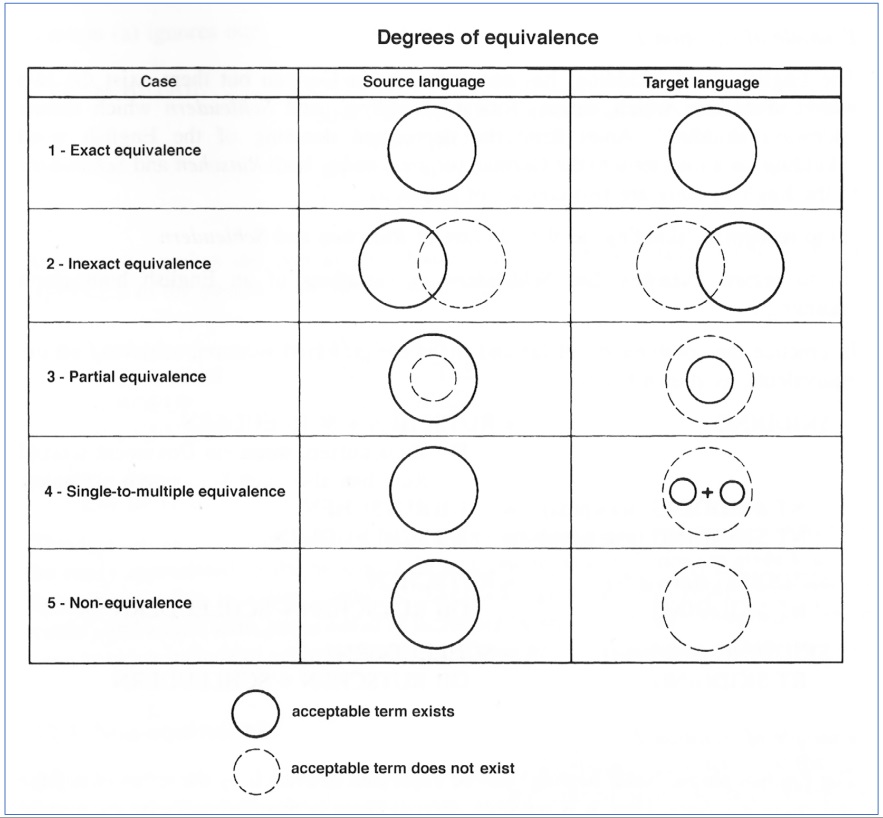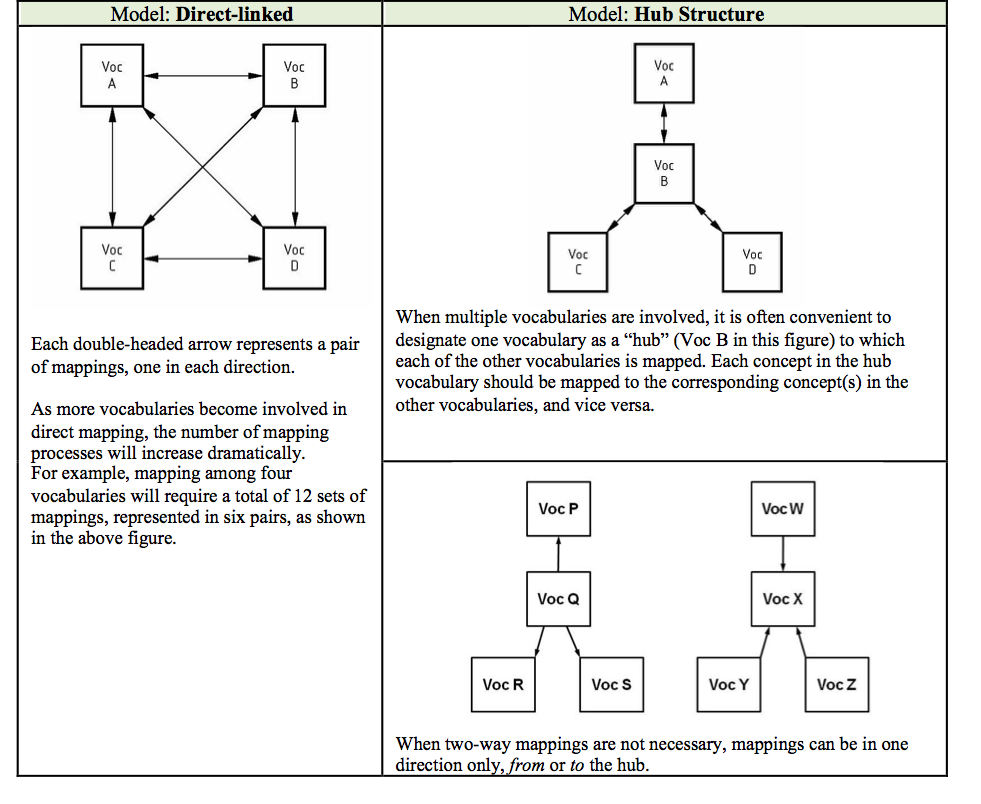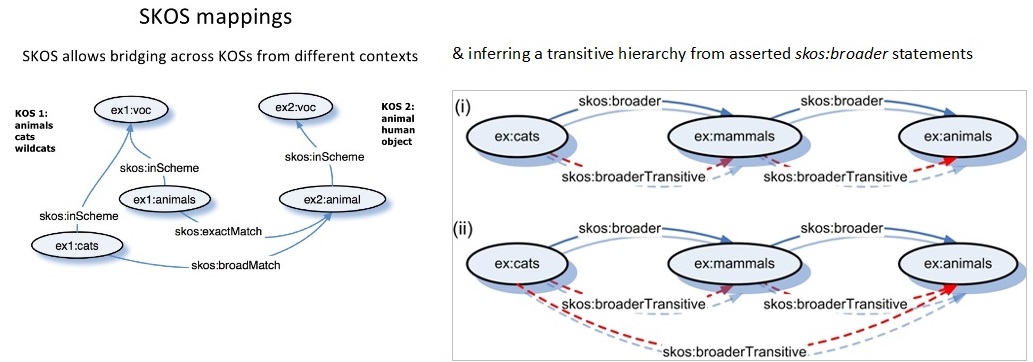KOS generation, reuse, connection, integration, and mapping
SEMANTIC INTEROPERABILITY
Notes and bookmarks
Refer to the full article: Zeng, Marcia L. "Interoperability" @ ISKO Encyclopedia of Knowledge Organization (IEKO) 2018-08-08
HOME || KOS CASES || MAPPING|| TERMINOLOGY SERVICES
Mapping
The term mapping might be used to refer to a process of establishing relationships between the contents of one vocabulary and those of another, or as a product of mapping process, a statement of the relationships between the terms, notations or concepts of one vocabulary and those of another.
1. Types of equivalencies
| Types of equivalencies:
|
See figure 9. |
- Aitchison, Jean, Alan Gilchrist, and David Bawden. 1997. Thesaurus construction and use: a practical manual. 3rd. Ed. London: ASLIB.
- ISO 25964-2:2013, 6.3 and 6.4.
2. Models of mapping process
Recommended by the ISO 25964-2:2013 (6.3 and 6.4):
|
See Table 2. |
Examples
- LCSH's individual entry --> “Closely Matching Concepts from Other Schemes”
- an example for the concept Smartphones
- an example for the concept Smartphones
- Mix’n’Match --> hundreds of KOS vocabs being mapped to Wikidata
https://mix-n-match.toolforge.org/index.html#/
- AGROVOC
- as the hub switching vocabulary of 15 important KOS vocabularies http://aims.fao.org/standards/agrovoc/linked-data
- an example for the concept of rice
- UMBEL (Upper Mapping and Binding Exchange Layer, http://umbel.org/)
- helps content interoperate on the Web
- has mapped OpenCyc, DBpedia, PROTON, GeoNames, and Schema.org.
Selective mapping choose only a limited number of concepts in the mapping
Co-occurrence mapping works at the application level (e.g., when both MeSH and LCSH subject headings are assigned to the same publication).
Blended mapping models allows a vocabulary's portion function as the base or supplements, depending on the situations encountered.
3. Encoding the alignment degrees
To encode and represent the mapping degrees when multiple vocabularies are involved, RDFS, OWL, and SKOS have provided guidance and properties, including:
- between ontological classes: owl:equivalentClass and rdfs:subClassOf
- between properties: owl:equivalentProperty and rdfs:subPropertyOf
- between concepts from concept schemes: skos:exactMatch, skos:closeMatch, skos:relatedMatch, and the reciprocal pair skos:broadMatch and skos:narrowMatch (Figure 11, left)
- for transitive super-properties of skos:broader and skos:narrower, skos:broaderTransitive and skos:narrowerTransitive (Figure 11, right)
- Isaac, Antoine. 2010. "SKOS and Linked Data". Presentation at ISKO-UK Linked Data: The Future of Knowledge Organization on the Web conference, 2010-09-14. https://www.slideshare.net/antoineisaac/skos-and-linked-data
- Isaac, Antoine, and Ed Summers. 2009. "SKOS: Simple Knowledge Organization System primer". Primer, World Wide Web Consortium (W3C). https://www.w3.org/TR/skos-primer/
4. Services enabling the discovery of term mapping results
- Federated Asynchronous Search Tool for remote vocabulary resources
- BARTOC FAST
- Preliminary search and browsing in selected vocabularies
- https://bartoc-fast.ub.unibas.ch/bartocfast/
- BARTOC FAST
- Advanced FAST
- Advanced search, enabling to limit the targeted vocabs by "Disable resources"
- https://bartoc-fast.ub.unibas.ch/bartocfast/advanced
- Search the classes across the vocabularies within this repository
- BioPortal
Explore more
Refer to the full article:
Zeng, Marcia Lei. 2019. “Interoperability”. Knowledge Organization 46, no. 2: 122-146. Also available in Hjørland, Birger and Gnoli, Claudio eds. ISKO Encyclopedia of Knowledge Organization, http://www.isko.org/cyclo/interoperability
Developed by Marcia L. Zeng, 2019 for research and educational purposes. Last updated 2023-02.
![]()
